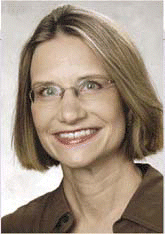The second teen case was described by Berrylin J. Ferguson, MD, Director of the Division of Sinonasal Disorders and Allergy at the University of Pittsburgh School of Medicine. A 16-year-old girl presented with bilateral nasal blockage that was constant. She had no recurrent infections or facial pain, was a competitive runner, and had no allergies. Nasal steroid sprays didn’t work, although there was mild improvement with topical decongestants.
Explore This Issue
February 2007CT showed bilateral obstruction, which turned out to be concha bullosa.
For this particular case, reduction surgery could be considered a reasonable option. Use your clinical judgment; sometimes the middle turbinate does need to be addressed surgically, Dr. Ferguson said.
Overall, the take-home message is that although concha bullosa are not necessarily a cause of blockage, sometimes you do need to address the concha bullosa to improve the airway, Dr. Ferguson said.
CSF Leak
James N. Palmer, MD, Assistant Professor of Rhinology at the University of Pennsylvania School of Medicine, described the case of a 54-year-old man who presented with nasal polyps and obstruction. A week after surgery for this condition, he complained of severe headache and had an odd clear nasal drainage.
Although it might have been tempting to simply increase the patient’s pain medications because the endoscopic view looked normal, a CT of the sinuses revealed something more serious-a CSF leak-the location of which was pinpointed by use of intrathecal flourescein.
A careful endoscopic exam and biopsy also found that the patient had an inverted papilloma. The papilloma was treated endoscopically using a Draf 3 approach, and the leak was fixed by repairing the skull with fibrin glue.
This case illustrated a number of lessons, Dr. Palmer said. It showed the value of careful endoscopic examination in the office, which can identify disease in places that it would not be normally expected, and that all intranasal lesions of unknown etiology should be biopsied, either in the office or the OR, he said.
In addition, the case showed that intrathecal flourescein can be very helpful in identifying the site of a CSF leak.
Fungal Cases
Peter H. Hwang, MD, Associate Professor at Stanford University, presented the case of a 75-year-old man who presented with purulent rhinorrhea and right maxillary pressure two months after he underwent endoscopic removal of a right maxillary sinus fungus ball. The patient was nonresponsive to 21 days of amoxicillin-clavulanate.

Leave a Reply